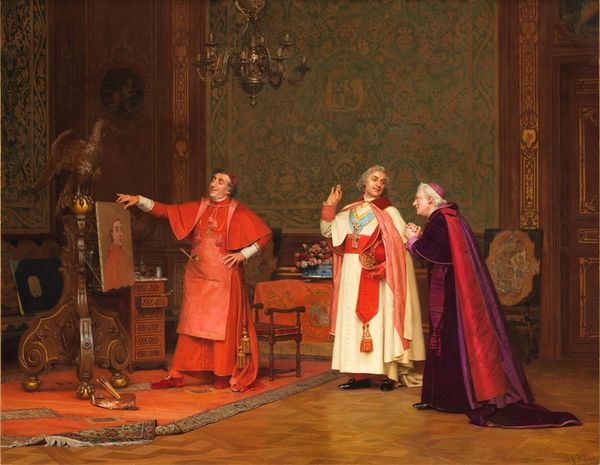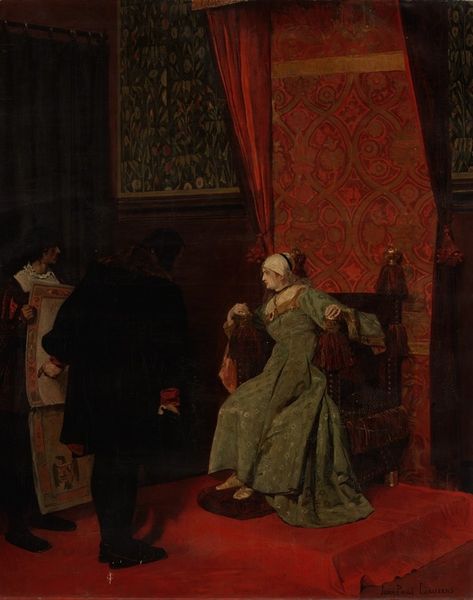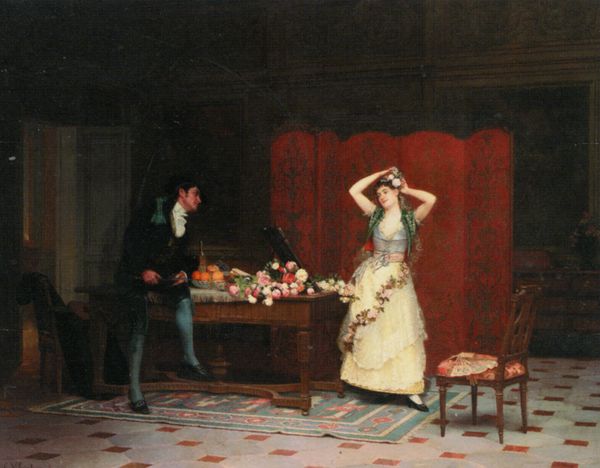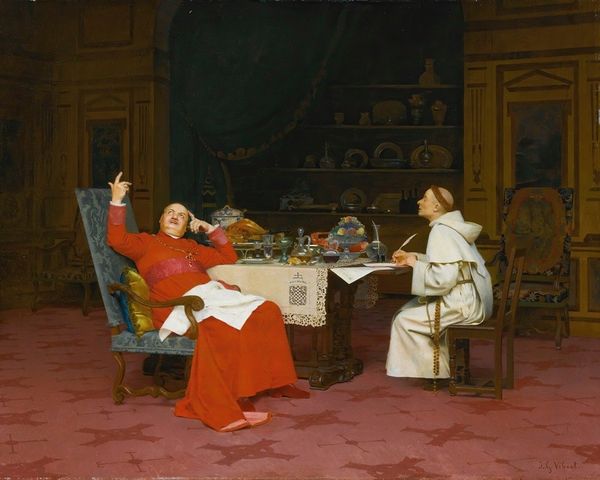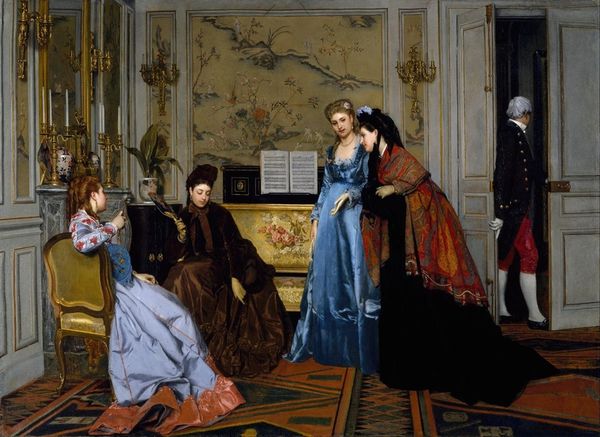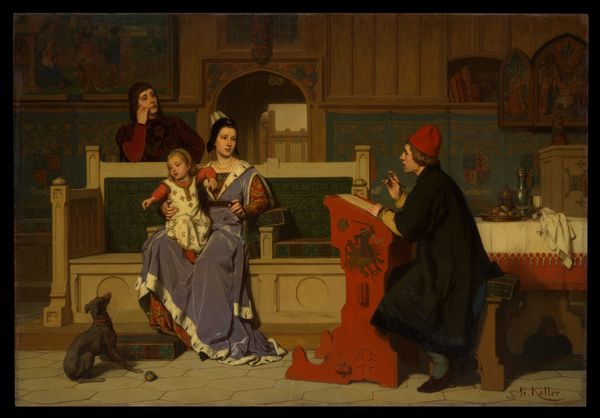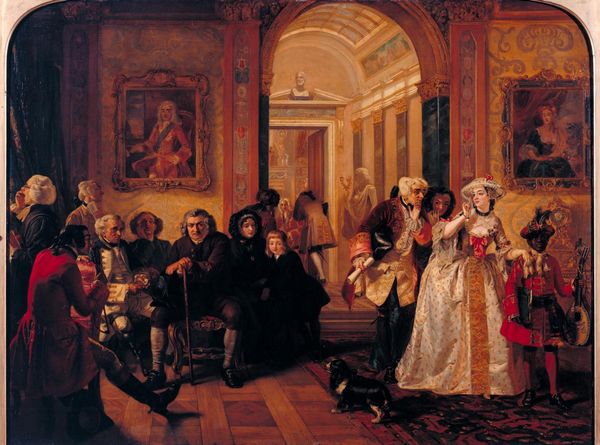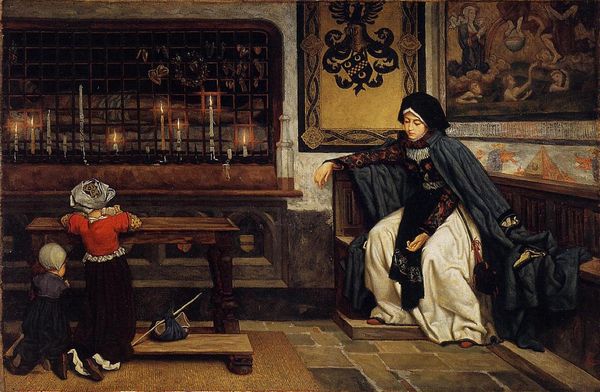
painting, oil-paint
#
portrait
#
narrative-art
#
baroque
#
painting
#
oil-paint
#
figuration
#
group-portraits
#
genre-painting
#
academic-art
Dimensions: 101.6 x 68.58 cm
Copyright: Public domain
Jehan Georges Vibert painted The Fortune Teller, using oil on canvas, sometime in the late 19th century. As you can see, the artist has employed great skill in rendering the textures of the many materials on display here. Consider the velvet of the ecclesiastics’ robes, made from silk and pile, or the smooth, hard surfaces of the marble columns, the glass of the stained-glass window. There’s a real material hierarchy on display, a spectrum from the luxurious to the mundane. Oil paint is, of course, itself a material, made from ground pigments suspended in linseed and other oils. Vibert’s technique is meticulous, demanding. But what does it mean? The artist is surely pointing to the decadent wealth of the Catholic Church, indulging in fortune telling instead of ministering to the poor. The making of the painting, then, is part and parcel of its social critique. Vibert encourages us to reflect on the value of labor and class. Ultimately, he shows us how the materials and the making of the artwork add to its depth and meaning.
Comments
No comments
Be the first to comment and join the conversation on the ultimate creative platform.
